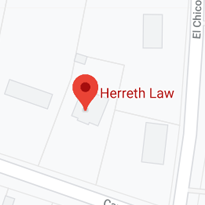Comparative fault is perhaps the most common insurance company defense in car wreck claims. This legal loophole basically shifts blame for the accident from the tortfeasor (negligent driver) to the victim.
Texas is a modified comparative fault state with a 51 percent threshold. So, unless the tortfeasor is at least 51 percent responsible for the crash, the victim is not entitled to damages. More on the division of responsibility below.
By contrast, neighboring New Mexico is a pure comparative fault state. In the Land of Enchantment, even if the victim is 99 percent responsible for the rash, the tortfeasor must pay a proportionate share of damages.
Since the contributory negligence defense is so common, a good Fort Worth personal injury attorney should be prepared to refute it. There are several effective ways to do so.
An Example
Assume Dan is pulling out into traffic from a shopping mall parking lot. Bob does not see Dan, and the two cars collide. Dan sustains a severe head injury, so his damages are $100,000.
During discovery, Bob’s lawyer examines data stored on Dan’s Event Data Recorder. The EDR information shows that Dan was speeding at the time. So, both drivers were arguably at fault, one for speeding and one for failing to yield the right-of-way.
If the contributory negligence defense goes to the jury, jurors must divide fault between Dan and Bob on a percentage basis. If the jury decides that Bob was 60 percent at fault, Dan would get $60,000 (sixty percent of $100,000). However, if jurors conclude that Bob was only 50 percent at fault, Dan gets nothing.
Some other defenses might also apply in this intersection collision cases, most notably the last clear chance defense. But that’s the subject of another blog.
Beating the Contributory Negligence Defense
If Dan’s attorney convinced the court that his contributory negligence did not significantly contribute to the crash, that’s the end of the matter. For example, if Dan was travelling 50 in a 45, that’s probably not fast enough to cause a crash. The outcome might be different if Bob was doing 65 in a 45.
Secondly, Dan’s lawyer could make basically the same argument to the jury. However, if Dan was going really fast, it might be a good idea to take a different approach. Perhaps traffic was very light on a bright and sunny day, so 65 was not terribly fast given the conditions. And, perhaps Bob ran a stale red light. He did not try to beat the light and lose.
Divided responsibility could affect car crash damages. For a free consultation with an experienced personal injury attorney in Fort Worth, contact Herreth Law. Home and hospital visits are available.

